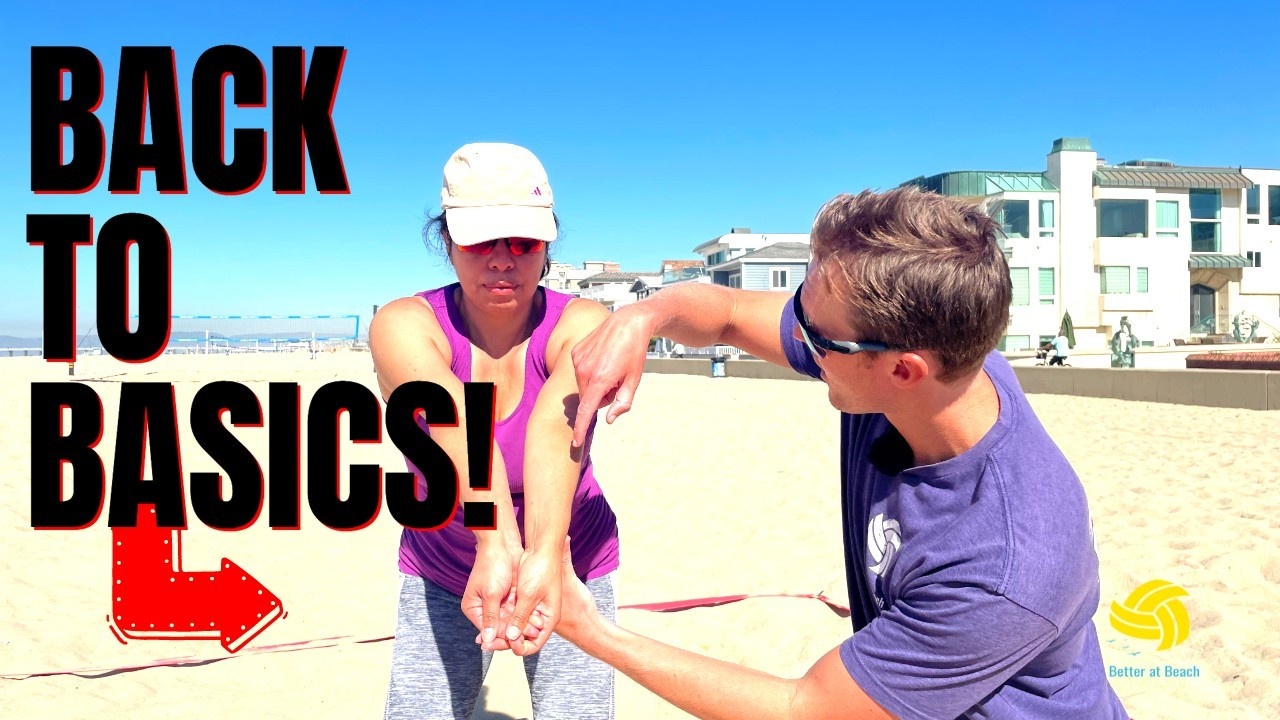
Volleyball Tutorial: Passing and Attacking Fundamentals for Beginner Volleyball Players
Before we begin, allow our Better at Beach coach, Brandon Joyner, to inform you that “beach volleyball is not an easy sport. It takes a lot of muscle memory and when you’re starting out, it’s not going to come as easy as you think because there are a lot of cues and keys and concepts that you have to think about all the time. There’s always something that you can be working on with beach volleyball, especially when you’re coming out as a beginner.”
Which is exactly why Mark Burik founded this company, and why Joyner is now a co-owner: It is their mission to help one million people get better at beach volleyball. The sport is booming, with NCAA Beach Volleyball becoming the fastest-growing sport in NCAA history -- if you're interested in the NCAA beach volleyball recruiting process, we got you covered! -- volleyball supplanting soccer as the most-played sport for women in the United States, beach volleyball facilities popping up in states and cities you’d least expect them – South Dakota? Cincinnati? Louisville?
If you’re reading this story breaking down the basics of beach volleyball, and how to pass and attack in beach volleyball, then you’re likely one of the new initiates to this wonderful, beautiful sport.
Congratulations, you’ve just made one of the best decisions of your life.
That’s no exaggeration, either: Beach volleyball is one of the healthiest activities on the planet. You’re outside. You’re in a community. You’re exercising. You’re building strength and cardio at the same time.
It’s literally perfect.
And it is our mission to get you not just playing beach volleyball, but playing it well. So we’ll start where every play in beach volleyball starts: the pass.
How to Pass in Beach Volleyball
Every play in beach volleyball begins with the pass. For this reason, it has an argument, at every level, as the most critical skill in this sport. So how do we pass in beach volleyball?
In the video above, you'll be able to see Brandon Joyner showing you exactly what you should look like when you're passing in beach volleyball: arms out, thumbs pointed down, elbows straight, forearms nearly touching.
When we have our arms out in front of us, with our thumbs pointed down and our forearms nearly touching, we're creating a platform -- this is a word you'll hear often in your beach volleyball journey -- on which the ball should land and subsequently bounce in our intended direction. If you've never formed a platform before, it'll feel weird, uncomfortable. But the good news is that you can practice your platform quite literally anywhere: at your office, as a passenger in a car, watching a movie or binging Netflix.
The idea of our platform is to be as flat as possible. Think of bouncing a ball off a flat surface -- a wall, your driveway, etc. -- vs. one that is uneven -- your lawn, a ball, etc. The flatter the surface, the more predictable the response from the ball will be. The more predictable and consistent the response, the more accurate you'll be. The more accurate you'll be with your pass, the more your partner will be able to give you a good set. The more good sets you get, the more confidently you'll be able to spike the volleyball. The more confidently you can spike the volleyball, the more points you score. The more points you score, the more you win. The more you win, the happier you'll be.
And it all starts with the pass!
How to Attack in Beach Volleyball
Now that we've made our perfect pass, with our flat platform, it's time to begin our attack. After we pass, we do not simply stand still and watch our beautiful pass. No: We shuffle to what is called our point of preparation, or point of hesitation, whatever you prefer.
Your point of preparation is the spot on the court where you'll begin your attack. To find this area, begin at the net, take one step with your right, one with your left, then make a hop, landing right-left. Note how far you are from the net: That's your ideal point of preparation.
After we pass, we get to our point of preparation and watch for the set, waiting patiently. We don't want to begin too early or we'll risk over-running the set, or approaching too far inside or outside and not being able to get a good spike on the volleyball. So we'll wait patiently for our setter to set the volleyball, and when our partner sets, we'll make our approach, using the same footwork we used to identify our point of preparation: right, left, right-left.
Then we'll attack!
As I mentioned, we're not going to go in depth with arm swing mechanics and other such nuances of the attack. For now, we're going to leave you with the pass, and our basic footwork to begin the attack.
That will be more than enough for you to chew on at the beginning of your beach volleyball journey.
If you want to pass perfect every time, keep reading.
Join our email list and Get your FREE BEACH VOLLEYBALL DRILL BOOK
We are going to help you pass with more accuracy, more consistency and more confidence! Get the positioning and the mechanics to control the first touch against any server, in any weather. You’ll also learn to develop a mindset that keeps you in the game so you can stay focused and win matches.
All you have to do is sign up for our COMPLETE PLAYER PROGRAM. We take you through the basics and then work all the way up to eyework and advanced mechanics so you pass every ball right where it needs to go!
Once inside the membership, you’ll be able to unlock “Pass with Consistency and Confidence: The Serve Receive Master Class” which will build your footwork and passing platform from the ground up. It comes complete with footwork drills, solo drills, partner exercises and passing charts so you can measure your progress!
We also include with 9 more skill courses AND our 60 Day At-Home Max Vertical Jump Training Program.






